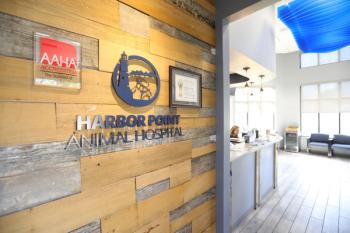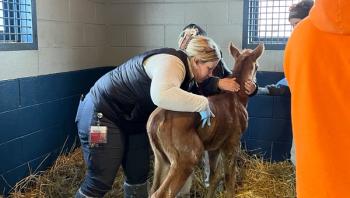
Preventive health toolkit aims to increase pet health and veterinary practice visits
Program offers online survey followed by strategic tools to guide veterinarians.
The dentist's receptionist won't let you leave the office without scheduling your next appointment. And Ron DeHaven, DVM, MBA, executive vice president of the American Veterinary Medical Association (AVMA) and chairman of the Partnership for Preventive Pet Healthcare, thinks the veterinary profession can learn from that model. Dentistry used to be about "filling and drilling," he says. "Now it's all about prevention—that's what most of the visits today are about."
That's what the Partners for Healthy Pets toolkit is all about too. The Partnership for Preventive Pet Healthcare, made up of the AVMA, the American Animal Hospital Association (AAHA) and more than 20 animal healthcare companies, unveiled the Partners for Healthy Pets tools in August to provide resources for increasing preventive pet healthcare visits. The program is free to AVMA and AAHA members.
With the preventive healthcare toolkit, the Partnership for Preventive Pet Healthcare aims to boost communication, practice visits, satisfaction and, in turn, practice revenue. "If we can increase the number of preventive care visits 3 percent, the increased revenue to the profession is between $400 million and $900 million," DeHaven says. "If we can get that to catch on, we can keep moving that number higher."
So whatâs in the toolbox?
The tools, including an online client survey called "The Opportunity," aim to bolster the value of routine care and act as a guide to enhance communication and delivery of preventive care through webinars, videos, documents and how-to manuals. The tools fall into five categories—implementing healthcare guidelines, creating a preventive care plan for clients, using Internet marketing and social media, communicating effectively with clients, and creating a feline-friendly practice—with 23 different resource tools (see "So what's in the toolbox?"). Presently, 20 individual tools are operational with the remaining ones to follow in the coming year. Users must enter an AVMA or AAHA membership number to access the tools.
By the end of next year, more than $8 million will have been invested by the Partnership sponsors in the development and marketing of the Partners for Healthy Pets toolbox. "They [the tools] are free to the veterinary practice to use them—it does not mean that they're not valuable," DeHaven says. At the end of August, 600 practices were accessing the tools.
By using The Opportunity with clients, veterinarians can get a glimpse into the minds of pet owners and team members, DeHaven says. Diane Eigner, VMD, owner of The Cat Doctor, a feline practice in Philadelphia, participated in a pilot of the online survey last fall. Although she'd wanted to survey her clients before, something always stopped her, she says. "I wanted to do it for a long time but didn't have the courage," she says. With The Opportunity, she felt like she had nothing to lose and went for it.
The information she gained from the survey confirmed some of Eigner's longtime theories but also surprised her. "Things we thought clients would remember we discussed they didn't even remember we'd mentioned," Eigner says. The results forced Eigner to think about how she and her team members communicate with clients and how they can do it better.
The survey also confirmed Eigner's assessment of her clients' Internet use. "My clients come to us for most of their information about cat health, but after that, it's the Web," she says. Eigner and her staff have embraced technology and their clients' efforts to be informed. "Our clients are very engaged with technology," she says. "It was good to know that my guesses were right on target."
Eigner says the survey also affirmed that cost was a barrier to client engagement in preventive healthcare. "Money is a barrier to making an appointment," Eigner says, "but not enough to keep them from coming in. I think if you really give them value, they'll keep coming in."
For her, service is key. "My staff is really doing what I want them to do," she says. "People are focused on customer service. It's a message I've been sharing with my staff for several years—especially this year." That's why Eigner is now experimenting with creative payment plans for clients despite reluctance to do so in the past. "I think what people have been saying is not that they won't spend, but that they'll be more discerning when they do spend," she says. "They want more value when they spend."
It's that kind of insight the Partnership for Preventive Pet Healthcare hopes practices will get from The Opportunity. "They can identify areas where they can improve and utilize those tools," DeHaven says. "By doing that they'll be better prepared to communicate and provide preventive care."
And the result, they believe, is that healthier pets will mean healthier practices as well.
Newsletter
From exam room tips to practice management insights, get trusted veterinary news delivered straight to your inbox—subscribe to dvm360.





